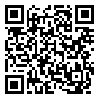Sat, Nov 22, 2025
[Archive]
Volume 34, Issue 1 (2-2020)
Med J Islam Repub Iran 2020 |
Back to browse issues page
Download citation:
BibTeX | RIS | EndNote | Medlars | ProCite | Reference Manager | RefWorks
Send citation to:



BibTeX | RIS | EndNote | Medlars | ProCite | Reference Manager | RefWorks
Send citation to:
Halimi L, Babamiri M, Hamidi Y, Majdzadeh R, Soltanian A R. Indirect estimation of student marijuana consumers population in Hamadan using PRM and NSU methods. Med J Islam Repub Iran 2020; 34 (1) :1092-1098
URL: http://mjiri.iums.ac.ir/article-1-6263-en.html
URL: http://mjiri.iums.ac.ir/article-1-6263-en.html
Department of Biostatistics & Epidemiology and Research Center for Health Sciences, School of Public Health, Hamadan University of Medical Sciences, Hamadan, Iran , arsoltanian@yahoo.com
Abstract: (2311 Views)
Background: Finding social causes of a particular disease or specific health problem in groups or hidden illnesses, such as drug misuse is difficult. To estimate the population size, it should be taken into account that under enumeration usually occurs in direct estimation of population of certain high-risk groups. The present study used indirect methods to accurately estimate the population of students who have once experienced marijuana abuse.
Methods: This cross sectional research was conducted on 461 students in Hamadan. Two indirect methods, the Network Scale-up (NSU) and proxy respondent method (PRM), were used. Data were analyzed by statistical tests and SPSS version 16 and Excel.
Results: The mean age (standard deviation) was 22.51 (4.19 years), and the prevalence of marijuana misuse was 1.94%, 4.12%, and 2.6%, respectively, in girls and 14.57%, 12.58%, and 10.4% in boys using NSU, PRM, and direct method.
Conclusion: Direct and NSU methods had higher bias than PRM, the frequency of PRM was closer to reality, and the once use prevalence of marijuana was higher in the young male population than in the female.
Methods: This cross sectional research was conducted on 461 students in Hamadan. Two indirect methods, the Network Scale-up (NSU) and proxy respondent method (PRM), were used. Data were analyzed by statistical tests and SPSS version 16 and Excel.
Results: The mean age (standard deviation) was 22.51 (4.19 years), and the prevalence of marijuana misuse was 1.94%, 4.12%, and 2.6%, respectively, in girls and 14.57%, 12.58%, and 10.4% in boys using NSU, PRM, and direct method.
Conclusion: Direct and NSU methods had higher bias than PRM, the frequency of PRM was closer to reality, and the once use prevalence of marijuana was higher in the young male population than in the female.
Keywords: Social network, Indirect estimation, Marijuana consumer, Network scale-up (NSU), Proxy respondent method (PRM)
Type of Study: Original Research |
Subject:
Epidemiology
Send email to the article author
| Rights and permissions | |
 |
This work is licensed under a Creative Commons Attribution-NonCommercial 4.0 International License. |








